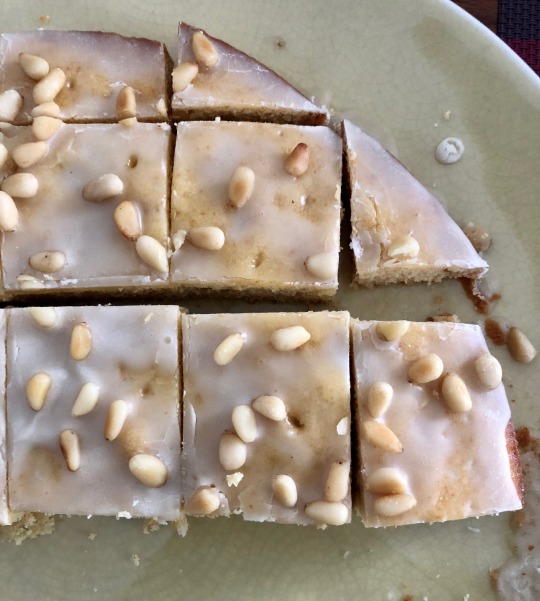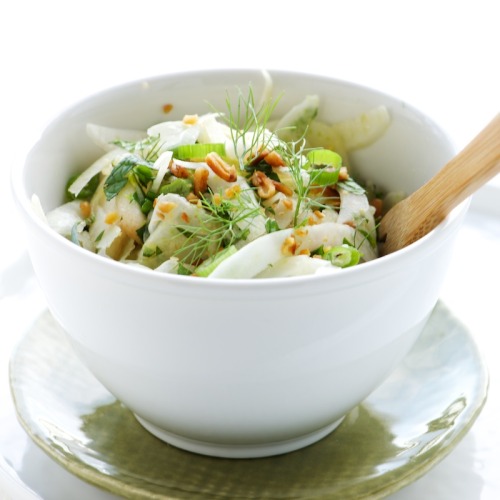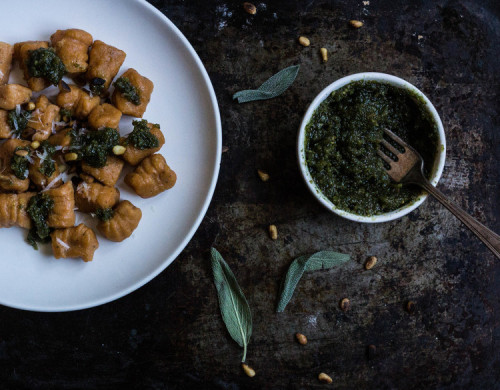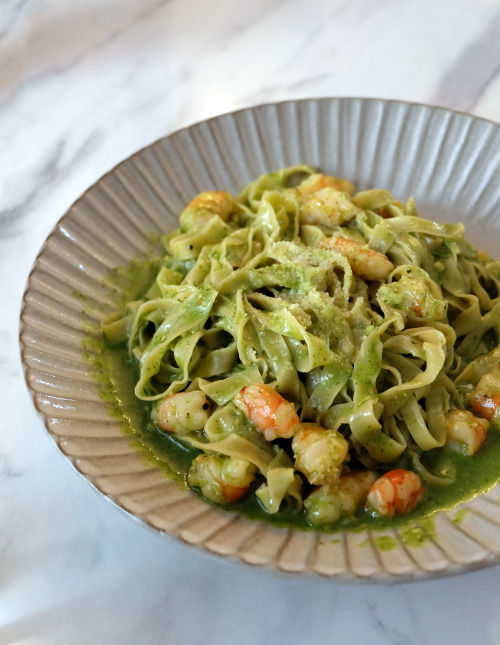#pine nuts
Pear & Fennel Salad w. Colatura & Pine Nuts
1/8 cup Pine Nuts (toasted)
- 1 pear, ripe but on the firm side
- 1 Fennel bulb, shredded, about 2 cups
- 2 scallions, sliced
- 2 tablespoons fresh mint, chopped
- 1 tablespoon fresh parsley, chopped
- ½ teaspoon Red pepper flakes
- 1 teaspoon Colatura
- 1/8 cup Olive oil
- 2 tablespoons white balsamic vinegar
- 1 lemon, juiced
- Salt and pepper to taste
http://pixelsandcrumbs.com/blog/2014/1/17/pear-fennel-salad-with-colatura-pine-nuts
Post link
By: Mark Dingemanse, Giovanni Rossi, and Simeon Floyd
Published by: Language in Society
Volume 46, Issue 2
Pages 129-158
LL Abstract:
In this article, Dingemanse, Rossi, and Floyd look at the use of place references in narratives from 3 societies/languages (Cha’palaa, a Barbacoan language of Ecuador; Northern Italian, a Romance language of Italy; and Siwu, a Kwa language of Ghana). The authors find that place references are used in all three languages to set the stage or foreshadow events and to make the story cohere by anchoring elements of the developing story. This systematic study identifies possible uses of place reference that are generic to narratives across all three languages, suggesting that storytelling in conversation is a useful area to perform such comparative research.
LL Summary:
The article begins with noting the intersubjective notion of place referencing and by defining what exactly is a place reference: a possible answer to a “where-question” - in other words, a place that is logically connected to other places (recursive) and can be represented in a variety of forms. Dingemanse et al. then begin with an example analysis from a conversion in the British TV quiz show QI, demonstrating peoples’ normative understandings for how to begin stories as seen in the words of comedians Jimmy Carr and Sue Perkins. Observing how listeners in this orient to what place references evoke (i.e. inferences to a story’s point or a story’s later events) in this example, the authors introduce their aim in this paper: to identify the affordances of place references in narratives and to find cross-linguistic evidence for their use in conversational storytelling. The article then reviews previous literature from conversation analysis on the structure of story beginnings in various cultures and languages, introducing the background of the data in their current study: 108 narratives from videotaped natural conversations in the three languages of interest: Cha’palaa, Northern Italian, and Siwu. In 56 of these narratives, the analysts find place references that generally perform two affordances across all three languages: setting the stage and making the story cohere. Using a story about graveyard snakes from Siwu and 2 stories (about boar-hunting and women downriver) from Cha’palaa, the authors show how inclusion of place references serve to signal the start of a story and what it’s about (while it’s exclusion leads to sidebar conversation). Next, story beginnings from all three languages are analysed to show the second function of place references- making the story cohere, or providing a reference point for subsequent elements and developments of the story. Again, the authors use counter-examples to illustrate how the lack of a place reference in the appropriate place in a story leads to consequences (such as the humorous asides following one Northern Italian speakers’ lack of specificity). Dingemanse et al. argue that this and other examples reveal that references to places act as a binding technique to introduce and contextualise other elements and developments of the story. The article continues by introducing examples where place is under-specified, usually in narratives about the here and now, where narrators can draw on their current situation or elements of prior talk to make up for the lack of place in their narrative. In the final section, the authors discuss the differences between ‘location’ and ‘setting,’ how references can be ‘recognitional’ (known to the audience) or ‘non-recognitional’ (not intended to be known to the audience), and different language-specific practices for referring to place. Finally, they conclude that speakers flexibly use the interactional affordances of place references to meet the challenges of telling a story in conversation and call for further study of cross-linguistic features in this area of interaction.
LL Recipe Comparison:
This article reminds me of the recipe for Linguine with Cauliflower, Pine Nuts, and Currants:

While Dingemanse et al. find similarities in the ways that three cultures use the same linguistic strategy (place reference) in storytelling, you will count yourself lucky that this recipe combines three different ingredients into the same delicious dish! The brown butter sauce in this recipe brings out the flavor of the savory ingredients, much as the research of Dingemanse et al. brings out the interesting aspects of what makes a story compelling no matter what culture you belong to. And just like a story is incomplete without a grounding in place, this dish would be incomplete without generous amounts of Parmesan! Good Cooking!
MWV 8/22/18
Health issues: Eat well or better leave the table
This looks a regular meal for anyone who wants a balanced diet. Meat, potatoes, salad, bread, olives and a delicate dressing with jamaica and pine nuts. Forgot it! two glasses of wine. Nothing like to eat without hurries. Slow Food… Slow drinking, slow digestion, slow conversation…
Eduardo Orozco
Post link
Lospanelletsson un postre de origen árabe que, en Cataluña, Valencia, Aragón y Baleares, se preparan en estas fechas. Tienen como base fundamental la almendra y son realmente deliciosos.
Por si alguien tiene curiosidad transcribo la receta de Carme Ruscalleda, una de nuestras grandes Chefs:
Ingredientes masa:
- 500 grs. de Almendras en polvo
- 350 grs. de Azúcar
- 150 grs. de Agua mineral
- 1 clara de Huevo
Otros ingredientes para añadir:
- 100 grs. de Piñones
- 150 grs. de Almendras en cubito
- Una yema de Huevo
- Ralladura de Limón
- Ralladura de Naranja
- Membrillo
- Café soluble
- Chocolate en polvo “puro Valor”
- Chocolate fondant
- Azúcar glass
Elaboración: En una cazuela amplia, se pone el agua y el azúcar. Se pone a fuego medio hasta que arranque a hervir. Volcar la almendra en polvo. Se ha de remover hasta que la pasta cueza y se desenganche de la cazuela. Dejar enfriar.Incorporar a la mezcla la clara de huevo sin montar, removiendo bien. Dejar reposar la pasta unas dos horas en la nevera (yo 12 horas, la preparé por la noche y los panellets los hice a la mañana siguiente).Dividimos la pasta madre en tantas partes como variedades queramos hacer.
-Para los de piñones y almendra:Se cogen porciones de 14 grs. y se forman bolas pequeñas que se rebozan con los piñones. Se colocan encima de una bandeja con papel de horno y se pintan con una yema de huevo diluida en unas gotas de agua. Se hornean a 200º hasta que tengan color (6-8 minutos). De esta manera el interior queda tierno.Para variar el surtido, los de almendra podemos hacerlos de forma alargada siguiendo el mismo procedimiento que los de piñones.
- Para los de limón y/o naranja:Se coge una porción de masa y se le añade la ralladura de limón y/o naranja. Se forman pequeñas bolas de 17 gramos y se rebozan con azúcar glass, marcando un hoyito en el centro. Se colocan encima de una bandeja sobre papel de horno y horneamos a 200º durante 6 minutos. Cuando enfríen rellenamos el hoyito con membrillo los de limón y con chocolate fundido los de naranja.
- Para los de café y/o chocolate:Se coge una porción de masa y se le añade café soluble y/o chocolate en polvo puro Valor y se mezcla hasta conseguir una mezcla oscura uniforme. Se forman pequeñas bolas de 17 gramos y se hornean a 200º durante 6 minutos. Los terminamos bañando o pincelando con chocolate negro fundido.
Lo cierto es que todas las variedades son buenísimas, pero os recomiendo, especialmente los clásicos panellets de piñones, los de castaña y chocolate y los huesos de santo.
Feliz Halloween!
Imagen vía La Cocina de los Inventos, Lola en la cocina ySerrajòrdia
Post link
Broccoli and Orange Cupcake
Ingredients:
- Broccoli.
- Orange.
- Pine nuts.
- Balsamic vinegar.
- Wonton wrappers.
- Olive oil.
- Herbs.
- Parmesan cheese (optional).
- Salt.
Method:
- Lightly oil the inside of a muffin tin and line each cup with 3 wonton wrappers to form a cup shape.
- Slice broccoli heads and orange slices into quarters and lightly glaze with olive oil.
- Arrange the orange and broccoli segments in the wonton cup, each layer should have a small sprinkling of pine nuts.
- When finished, sprinkle a dusting of salt and herbs over the top.
- Add some freshly grated parmesan as well for a great topping.
- Bake for 15-20 minutes at 200°C (until starting to brown).
- In a small pan, heat the balsamic vinegar until reduced to about ½ to ¼ and leave to cool.
- Take the cupcakes out of the muffin tin and gently drizzle the balsamic reduction over the top.
Post link

The taste of pine nuts and the subtle flavor of honey is perfectly melded into this cake. A simple glaze with more nuts on the top is an icing on the already yummy cake!
Click here for the recipe –> RECIPE










